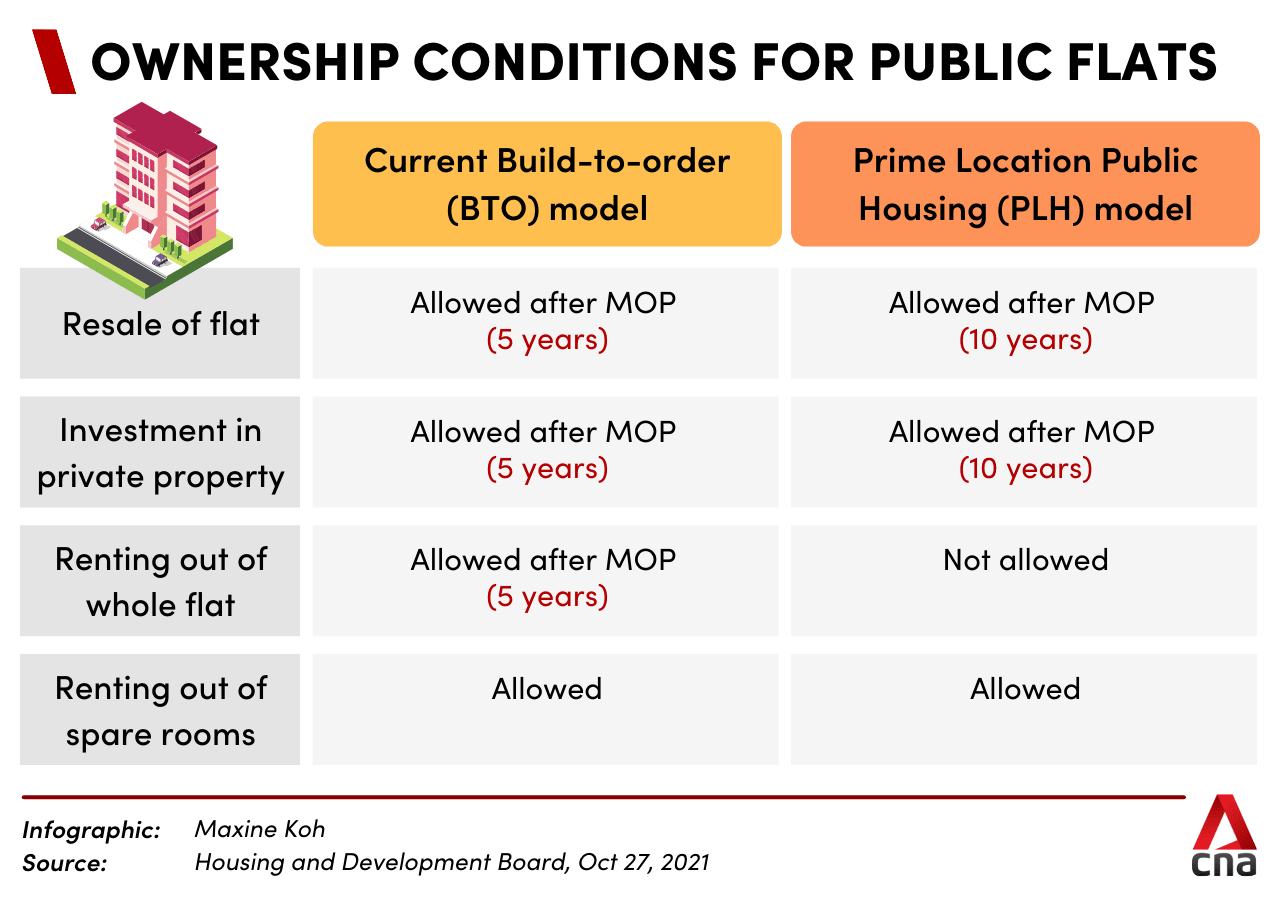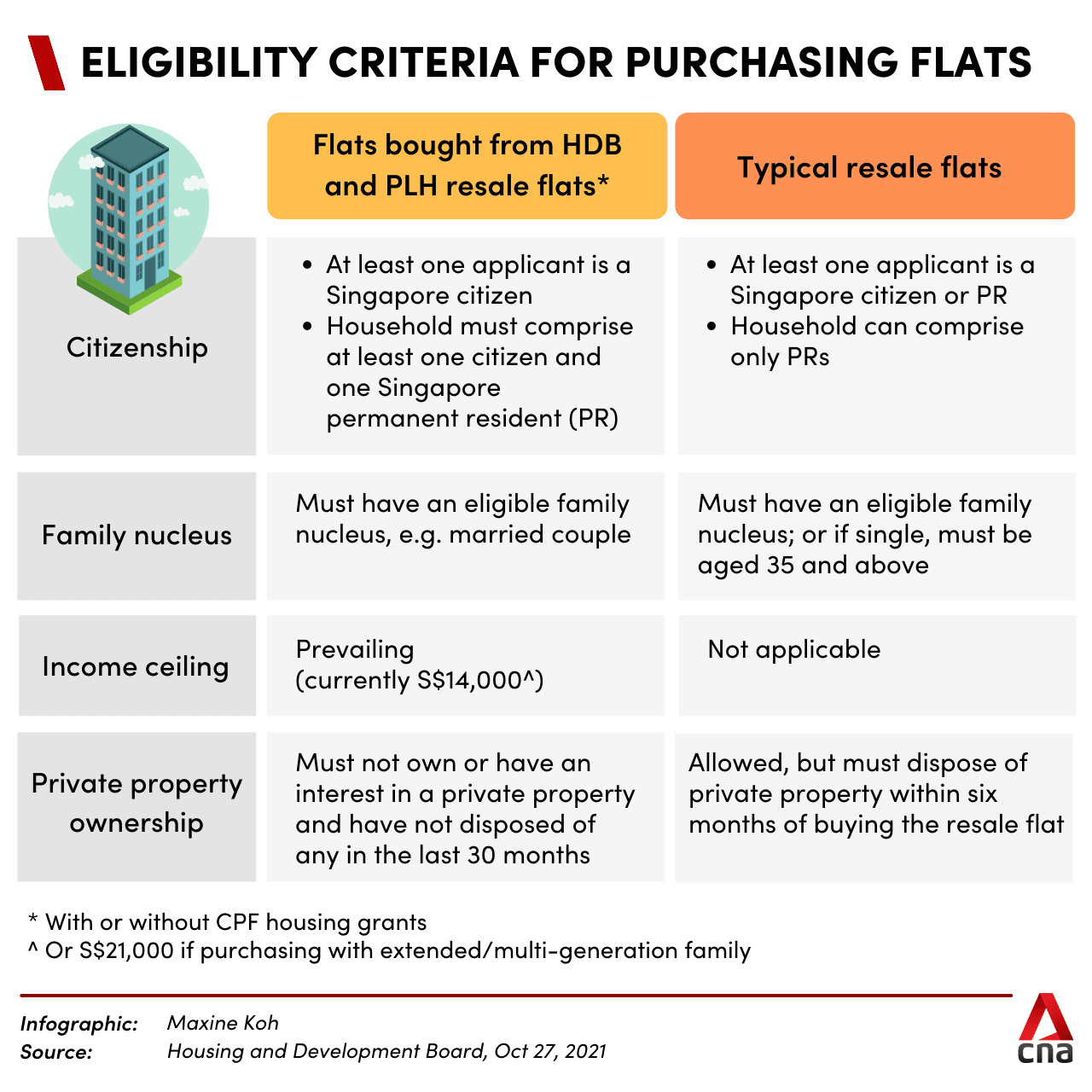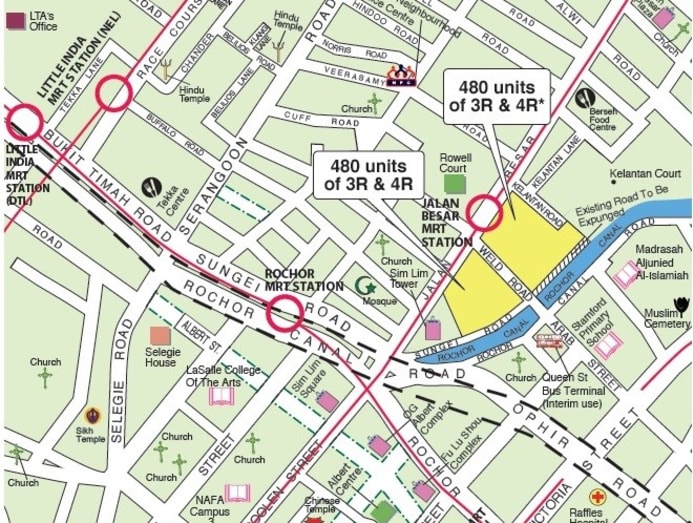Future owners of prime area BTOs to face 10-year minimum occupation period, subsidy recovery rules
- New housing model for public flats in prime areas
- Owners of BTO flats in these areas will face a 10-year minimum occupation period, double that of typical projects
- These flats will be priced with additional subsidies; those who sell their BTO units will have to pay back HDB a percentage of the resale price
- The resale buyer criteria for these units will be tighter than for typical resale units
SINGAPORE: Buyers of future Build-to-Order (BTO) flats in prime locations will face a longer minimum occupation period (MOP) of 10 years, as part of a new model meant to keep housing in these locations accessible for Singaporeans, said authorities on Wednesday (Oct 27).
This 10-year MOP – which is how long owners must occupy their flats before being allowed to sell it on the open market – is double that of typical BTO projects.
Under the model, these flats will also come with extra subsidies, but those who eventually sell their units will have to pay back the Housing & Development Board (HDB) a percentage of the flat’s resale price.
The measures come more than two years after it was first announced that thousands of homes would be built on the Greater Southern Waterfront, a prime location that called for a new housing model.
Speaking at a media briefing, National Development Minister Desmond Lee said that if left entirely to private market forces, these prime locations would become expensive and exclusive, with housing that only the well-to-do can afford.
“We see this happening in many cities around the world ... But we are determined not to let this happen in Singapore,” said Mr Lee.
The new Prime Location Public Housing (PLH) model, comprising a slew of tightened rules, follows 10 months of public engagement.
It will only apply to future projects – with the first to be launched at Rochor in the upcoming November BTO sales exercise.
SUBSIDY CLAWBACKS
As flats in these prime areas will “naturally command higher market values”, the units will be priced with additional subsidies, on top of those currently provided for all BTO flats.
“This will keep flat prices affordable for a range of Singaporeans,” said HDB and the Ministry of National Development (MND) in a release.
But those who sell their flats later on will have to pay a percentage of the unit’s resale price to HDB, to allow authorities to “fairly recover the extent of the additional subsidies” initially given.
Mr Lee said this will address concerns over extra subsidies leading to “excessive windfall gains” and whether it would be fair to BTO buyers in other parts of Singapore.
“The subsidy recovery rate will reflect the extent of additional subsidies provided at launch and the same rate will apply regardless of when the flat is resold in the future”, said MND in response to CNA’s queries.
More details will be announced in the November BTO exercise, but Mr Lee added that the percentage may be adjusted for other projects in future, depending on market conditions and the subsidies needed.
LOWER QUOTA FOR PRIORITY SCHEME
To buy BTO units in prime areas, the eligibility criteria will be the same as that for buying BTOs elsewhere.
But the quota for priority allocation under the Married Child Priority Scheme will be reduced.
Currently, the scheme sets aside up to 30 per cent of BTO units for those who want to live with or near their parents or children in the area.
Moving forward, quotas for PLH projects will be adjusted depending on their location.
10-YEAR MINIMUM OCCUPATION PERIOD
PLH flat owners will have to fulfil a 10-year MOP before they can sell their flats in the open market or invest in a private residential property.
In addition, owners will not be able to rent out their whole flat at any point in time, even after the MOP is over. They will only be allowed to rent out spare bedrooms.
These conditions will apply to both the person who buys the BTO unit from HDB, as well as all subsequent buyers on the resale market.

“These policies will help to strengthen the owner-occupation intent of public housing and also seek to deter speculative demand and moderate resale prices,” said Mr Lee.
He added that appeals by those who genuinely face extenuating circumstances will be reviewed on a case-by-case basis.
TIGHTER RULES FOR BUYING RESALE FLATS
On top of that, the resale of these flats will be restricted to only those who meet eligibility conditions to buy BTO flats.
These conditions include meeting a household income ceiling, currently set at S$14,000, and being an eligible family nucleus, such as a married couple.

“Without such restrictions, the resale prices of these homes in prime locations may rise beyond the reach of many Singaporeans over time.
“So we will maintain the resale restrictions for at least half of the 99-year tenure of each prime location flat, before we consider whether to review them,” said Mr Lee.
PRIME LOCATION
The PLH model will apply to selected public housing projects in prime and central locations, such as the city centre and surrounding areas, including the Greater Southern Waterfront, said the release.
The first project to be launched under the PLH model will be at a site in Rochor.
Located along Kelantan Road and Weld Road, it will feature 960 units of three-room and four-room flats, and 40 two-room rental flats which will be incorporated within the same blocks.
In response to CNA’s queries, MND said HDB plans to launch at least one PLH project a year, though the exact numbers and their proportion out of total new flat supply may differ year on year, depending on site availability, among other factors.

“WILLING BUYER, WILLING SELLER”
When asked about how authorities would prevent BTO buyers from bumping up their future selling price to factor in the subsidy recovery, MND said the resale market functions on a “willing buyer, willing seller basis”, and sellers will need to have “realistic expectations”.
In addition, extra features have been built into the model to moderate the pace of price increases, such as ringfencing the pool of eligible resale buyers, said MND.
“Sellers who attempt to price in the subsidy recovery in the selling price, in the hopes of maximising gains, may find themselves with an even smaller pool of potential buyers.”
It added that buyers of resale PLH flats will need to “price in the implications of the additional ownership conditions”, such as the extended MOP and restrictions on renting out the whole flat.
“NOT CAST IN STONE”
Mr Lee also stressed that like other policies, the PLH model “is not cast in stone”.
“It is very new and we will continue to review the parameters over time, based on our experience from the projects that are launched along the way.
“We will make adjustments where necessary to ensure that the model achieves our goals and remains relevant to the needs of Singaporeans.”







